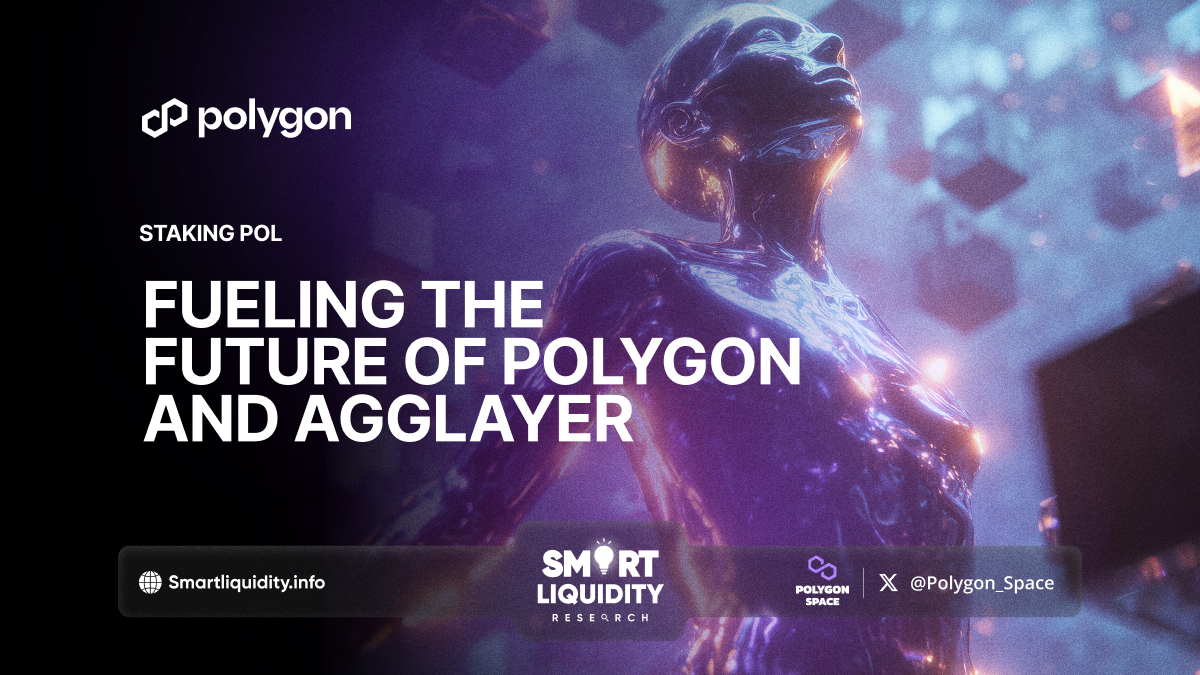Staking POL: Fueling the Future of Polygon and AggLayer


As Web3 continues to evolve, scalability, interoperability, and sovereignty have become central challenges. Polygon, one of the leading Ethereum scaling ecosystems, is addressing these issues head-on with its ambitious vision of a unified, scalable Layer 2 (L2) landscape. At the core of this vision lies POL, the next-generation token powering Polygon 2.0 and its groundbreaking AggLayer—a protocol that enables seamless cross-chain coordination among zero-knowledge (ZK) powered L2s.
One of the most crucial components of this transformation? Staking POL.
In this article, we explore how POL staking works, why it matters, and how it fuels the future of Polygon’s ecosystem.
What is POL? A Quick Recap
POL is the upgraded native token of the Polygon ecosystem, designed to replace MATIC in Polygon 2.0. While MATIC played a foundational role in powering Polygon PoS, POL is built for multi-chain scalability, designed to support a vast network of ZK-powered L2 chains through native staking, governance, and ecosystem coordination.
Key features of POL:
Hyperproductive Token: POL can be staked to secure multiple chains simultaneously.
Multi-Role Support: One token, many utilities—staking, governance, gas fees, and more.
Ecosystem Coordination: POL powers the AggLayer by aligning incentives and security across Polygon chains.
The Role of POL in Polygon 2.0 and the AggLayer
Polygon 2.0 envisions a network of interconnected L2 chains, all secured by ZK technology and coordinated by the AggLayer—a protocol that aggregates liquidity, users, and data into a single, unified layer for seamless interoperability.
To make this ecosystem secure and economically sustainable, POL staking becomes the backbone. Here’s how:
1. Security Through Staking
Each Polygon L2 (e.g., zkEVM chains) can be secured by validators who stake POL. These validators perform key functions:
Participate in consensus mechanisms.
Prove validity of transactions via ZK proofs.
Provide cross-chain data availability and message passing.
With POL, these validators can operate across multiple chains, maximizing efficiency and minimizing fragmentation.
2. Validator Marketplace
Polygon 2.0 introduces a marketplace of validators where chains can choose their own set of validators from a shared pool. POL stakers can delegate to validators serving multiple chains, earning rewards based on validator performance and chain-specific incentives.
This flexible validator model creates shared security while allowing chains to retain sovereignty and customization.
3. Powering the AggLayer
The AggLayer coordinates interactions between different L2s—standardizing data availability, proofs, and settlement. POL plays a key role by:
Incentivizing validators to ensure cross-chain data availability.
Aligning interests between chains and validators through shared economic security.
Reducing trust assumptions in interoperability by anchoring security in POL staking.
Why Stake POL?
For token holders, staking POL isn’t just a way to earn yield—it’s a way to actively participate in securing and scaling Web3. Benefits include:
Staking Rewards: Earn POL for securing the ecosystem.
Multi-Chain Exposure: Support multiple Polygon chains with a single stake.
Early Ecosystem Involvement: Help shape and support new chains, apps, and infrastructure.
Future Governance Power: As Polygon governance evolves, stakers will have a voice in protocol upgrades and policies.
How to Stake POL
While the full rollout of POL staking is happening in phases, here’s the general process:
Migrate MATIC to POL: Token holders can upgrade their MATIC to POL via the official Polygon upgrade portal.
Choose a Validator or Become One: Stake POL directly or delegate to an existing validator.
Monitor and Manage: Use staking dashboards to track performance, rewards, and re-delegate if needed.
Polygon plans to provide robust tools and documentation to ensure an easy staking experience.
The Road Ahead
POL staking is more than just a token utility—it’s the economic engine of Polygon’s multi-chain future. As the AggLayer gains adoption and new ZK-powered chains join the network, the demand for POL staking will likely grow, creating stronger network effects and deeper ecosystem alignment.
This is a pivotal moment not just for Polygon, but for Ethereum scaling and the broader Web3 movement. By staking POL, users can actively support a decentralized, secure, and unified Layer 2 ecosystem—one that delivers on the true promise of blockchain interoperability and scalability.
Conclusion
Staking POL is central to realizing the Polygon 2.0 vision: a borderless, seamlessly interoperable Web3 ecosystem powered by ZK technology and coordinated by the AggLayer. With a hyperproductive staking model, ecosystem-wide incentives, and deep alignment between validators and chains, POL is designed to be more than a token—it’s the fuel driving the next evolution of Ethereum scaling.
Whether you’re a developer, investor, validator, or community member, staking POL means helping build the infrastructure of the decentralized internet.
REQUEST AN ARTICLE
Disclaimer:
This article is for informational purposes only and does not constitute financial advice. Readers are encouraged to conduct their own research and consult with a financial professional before making any investment decisions.




